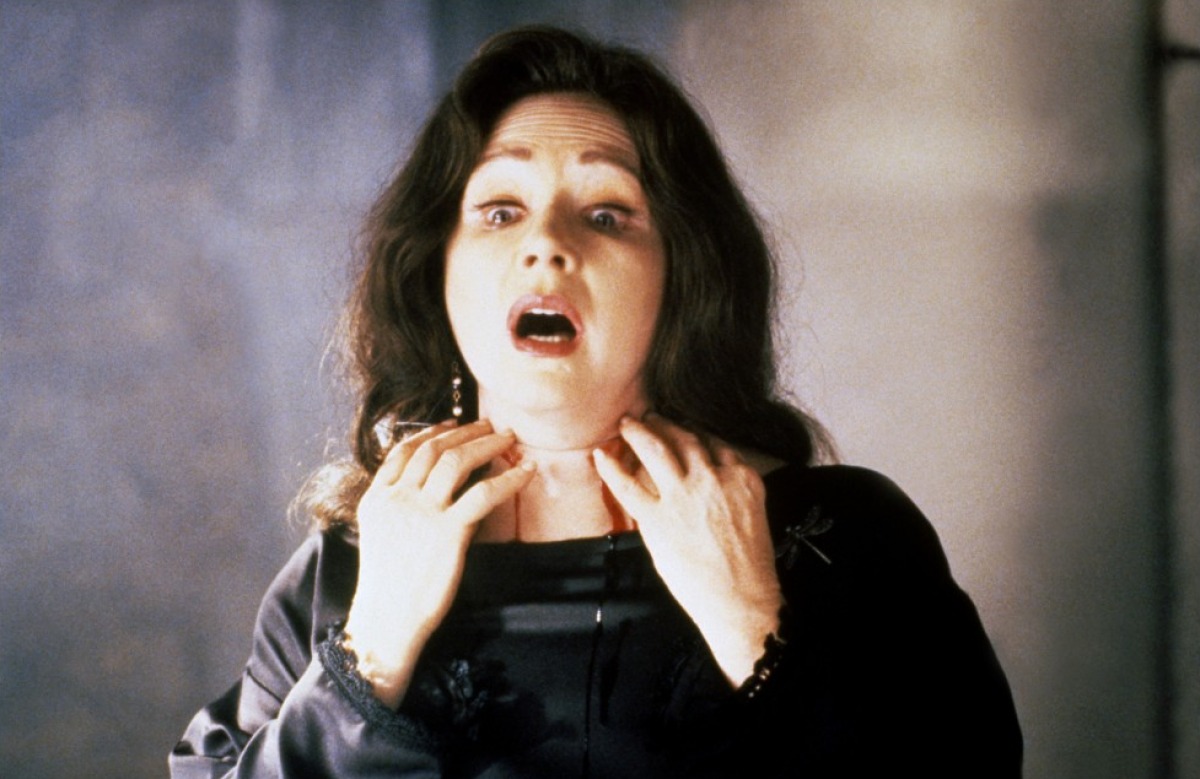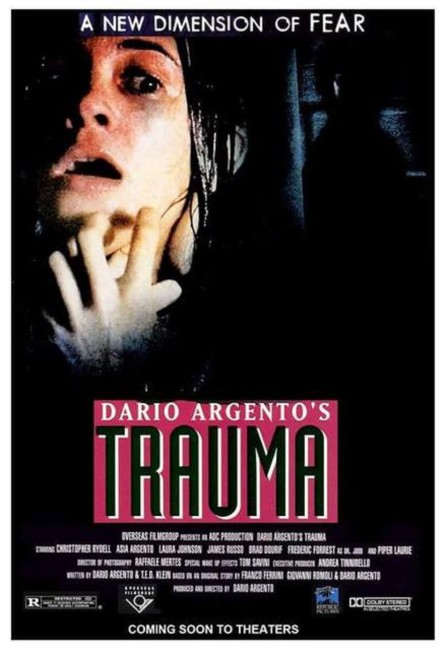Crew
Director/Producer – Dario Argento, Screenplay – Dario Argento & T.E.D. Klein, Story – Dario Argento, Franco Ferrini & Giovanni Romoli, Photography – Raffaela Mertes, Music – Pino Donaggio, Makeup Effects – Tom Savini, Production Design – Billy Jett. Production Company – ADC/Penta/Overseas Filmgroup.
Cast
Christopher Rydell (David Parsons), Asia Argento (Aura Petrescu), Piper Laurie (Adriana Petrescu), Frederic Forrest (Dr Leopold Judd), Laura Johnson (Grace Harrington), Brad Dourif (Dr Lloyd), Ira Belgrade (Arnie), James Russo (Detective Travis), Cory Garvin (Gabriel Pickering), Hope Alexander-Willis (Linda Quirk)
Plot
Graphic artist David Parsons comes across Aura, an anorexic teenager who is about to jump off a bridge. He persuades her to come down. She is taken back to a psychiatric clinic into the care of the sinister Dr Leopold Judd. During a seance that evening, Aura’s mother, the medium Adriana Petrescu, channels the spirit of a murder victim and makes the discovery that the killer is one of the people at the seance – just before the killer decapitates her. Aura returns and seeks refuge with David. As David tries to seek the identity of the killer, the killer continues their trail of murders, using an electronic noose that decapitates victims.
Trauma is a psycho-thriller from Dario Argento, the cult Italian director who made such arty, ultra-violent films as Suspiria (1977), Inferno (1980) and Opera (1987), among others. Many regard Argento as having lost a certain edge from the 1990s onwards and Trauma met a poor box-office performance and a critical drubbing from Argento fans. Despite this, Trauma is a worthwhile film.
Dario Argento proves to be on characteristically fine form. Trauma is filled with all the wild bursts of imagination, bizarre plot twists and sequences of almost surreal intensity that one has come to associate with Argento. Some of these are quite astonishing – the seance where Piper Laurie’s medium picks up the spirit of a murdered woman, only to realise that the murderer is one of the people sitting around the table (a scene that is reminiscent of the opening of Argento’s Deep Red (1976), which had a psychic giving a demonstration and picking up a killer in the audience); the scenes with the kid who lives next door to the killer’s house puzzling over the head that keeps looking out the window, entering the house and playing with the electronic noose, even putting it around his neck without realising what it is; or where Christopher Rydell finds a victim’s severed head left in a room, still whispering to him. Trauma comes with Dario Argento’s characteristically arty flourishes and distractions – lizards seem to run through the film as a motif and are intercut with the killings, while opera plays in the background.

Collaboration with horror writer T.E.D. Klein gives Argento a more substantial and coherent plot than usual. The script for Trauma is not without some annoyances – the revelation of the murderer being amongst the attendees at the seance at the beginning turns out to be a cheat. Argento and T.E.D. Klein also do not seem to know the technical difference between anorexia and bulimia (which is what the film shows Aura to be suffering from, rather than anorexia). There are a few loose ends amongst the exposition – we never find out much about the ambiguous Dr Judd, who at one point is found molesting Aura. Nor do we understand why David became a drug addict.
The cast are average – Argento’s daughter Asia, in the first of her lead roles in her father’s films and then on the international stage, is annoyingly brattish. Brad Dourif typically overacts, as does the usually great Piper Laurie in a horridly overblown performance.
Dario Argento’s other films are:– The Bird with the Crystal Plumage (1970), The Cat O’Nine Tails (1971), Four Flies on Grey Velvet (1971), Deep Red (1976), Suspiria (1977), Inferno (1980), Tenebrae/Unsane (1982), Phenomena/Creepers (1985), Opera/Terror at the Opera (1987), Two Evil Eyes (1990), The Stendhal Syndrome (1996), The Phantom of the Opera (1998), Sleepless (2001), The Card Player (2004), Mother of Tears: The Third Mother (2007), Giallo (2009), Dracula (2012) and Black Glasses (2022). Dario Argento has also written and produced Demons (1985), Demons 2 (1986), The Church (1989) and The Sect/The Devil’s Daughter (1991). Dario Argento’s World of Horror (1985), Dario Argento: An Eye for Horror (2001) and Dario Argento Panico (2023) are documentaries about Argento.
Trailer here


